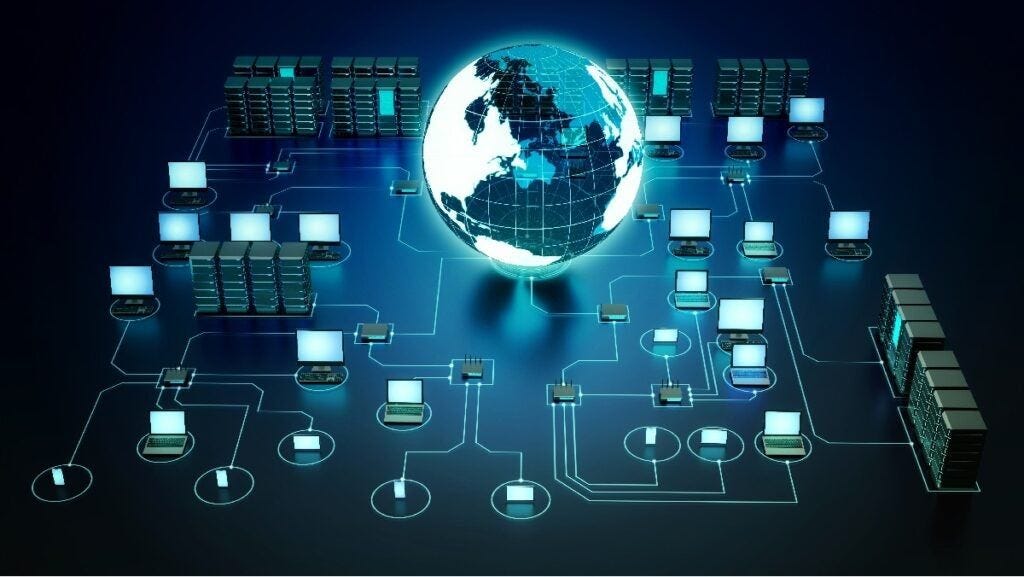The Backbone of Modern Communication Networking is the cornerstone of modern communication, linking together devices, systems, and people. That the internet that underpins our daily existence or those complex networks sustaining businesses nothing can happen without networking in a world growing ever more connected. In this post, we will delve into the basics of networking, types of networks along its key elements forming the same while understanding why it is important in our digital era.
What is Networking?
This is the process of linking computers, servers, and other devices so that data can be shared. They may be local, for example within a single home or office (LAN), or else globally across the Information superhighway. In essence, networking involves making it possible for a group of two or more devices to communicate with each other so that they can share information and work together better than ever. To this end, current networking implements a wide range of hardware and software components with some level of protocol implementation to control and quicken communication among devices. These are generally used for sharing resources (such as printers, files, etc.) with different sections located near. An Ethernet is a very widely deployed LAN technology, providing high-performance, switched, and dedicated links.
1. WAN (Wide Area Network): A WAN covers a much larger geographical area than the LANs and connects multiple LAN over cities, countries or even continents. The largest WAN is the Internet itself. Organizations which have multiple locations implement WAN so that they can be able to communicate and transfer data across those large distances. WANs are usually built by technologies like leased lines, MPLS (Multiprotocol Label Switching) and VPNs (Virtual Private Network).
2. Metropolitan Area Network (MAN): A MAN is huge than LAN such as want to span cities or a whole campus. Universities, government agencies or large corporations use MANs to interconnect a number of buildings and facilities.
3. Wireless Networks: The term wireless network is used to describe a computer network that enables computers and other equipment (called nodes) to communicate via radio waves, infrared signals etc. without cables. Wireless LAN (of the type Wi-Fi) enables connection of devices from within a local area for internet and other communication activities without wires. Wireless networks provide the advantage of convenience and adaptability in situations where traditional wiring can be cumbersome.
4. VPN (Virtual Private Network): This is a service that creates an encrypted connection between remote users and devices or private networks where they work. They are commonly used to connect employees working remotely (e.g. telecommuters) and access the company’s internal network, keeping communications secure; this is probably where you’ve heard about VPNs before in general terms.
Key Components of a Network
There are several key components that comprise a network, and each serves an important role for the purpose of communication and exchange:
1. Routers: Routers are signaling appliances which transport data packets in different networks and determines the path for sending those packages or signals. For example, home networks are often connected to the internet and that is all done by routers.
2. Switches: Switch connects multiple devices together on the same network and uses processors called ASICs to help device understand where a data packet is supposed to go/to be received. Switches, on the other hand work within a network and serve to direct data to an individual machine.
3. Network Interface Cards (NICs): NICs are hardware-based devices, which a user can install or plug in their computer, (ex: printer) to connect on the networks. This provides the physical interface to communicate over a network.
4. Cords and Wires Media: A network connects devices with Ethernet cords, charging information between them. Wireless communication works by means of wireless networks, radio waves or infrared signals in place of physical cables between devices.
5. Firewalls: Firewalls are a security system that controls to entering and allow out traffic in your network based on predefined control rules. They are a firewall between some secure internal network and unsecure external networks (such as internet).
Why It Matters Networking
Is essential to modern connectivity primitive, for…basic communications right up the stack. Complex business operations. It enables people to use resources, work on projects, and share data from virtually anywhere in the world. Networking is an essential part of businesses which helps with functions such as data storage, cloud computing, and cybersecurity to make sure that organizations run smoothly. On the personal side, networking enables everything from talking to family via telephony and entertainment over-the-top (OTT), to managing devices in a smart home.
Conclusion
In a future world where more and more things are connected, networking will be crucial to linking people as well as devices or systems together in ways that drive innovation and make life better. Networking; is a principal part of the digital era (simple home network or broad enterprise infrastructure)
